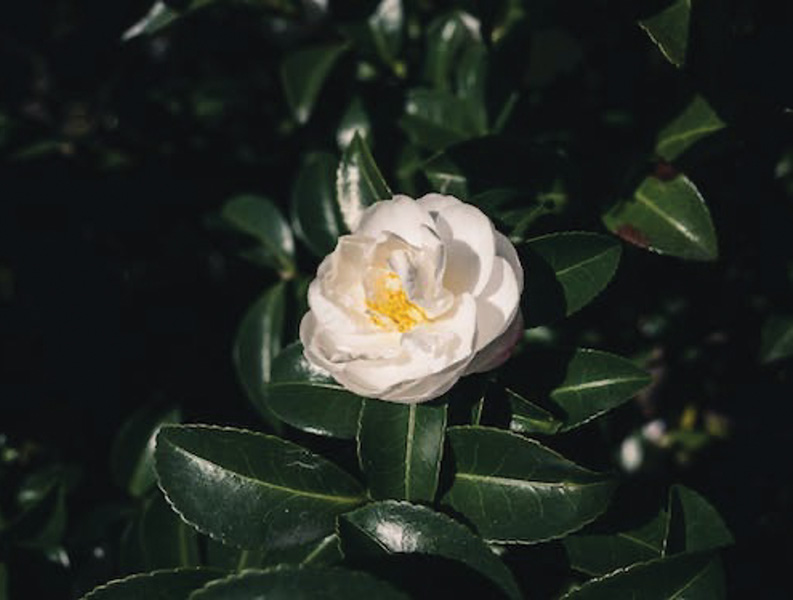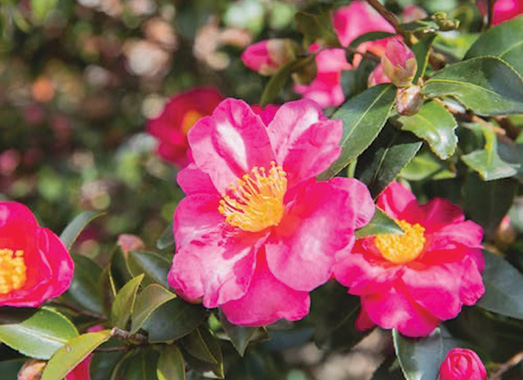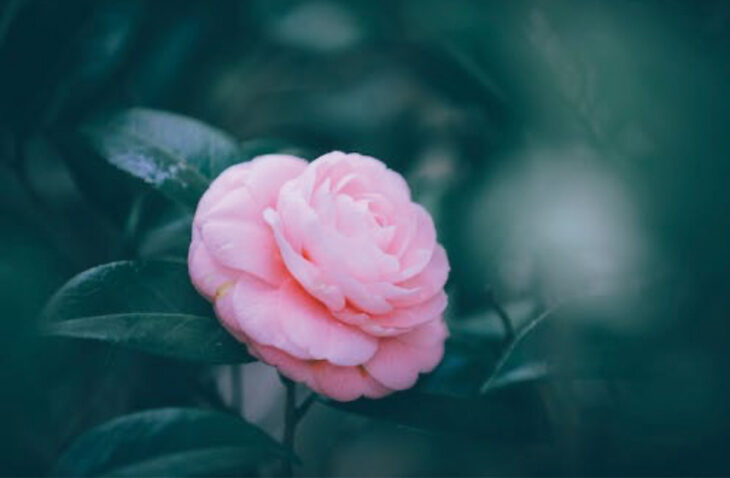Even in the bleak, cold winter, we in the deep South still enjoy riotous color with camellias. Here’s everything you need to know about this beautiful, robust plant.
WHAT ARE CAMELLIAS?
Camellia japonica, which originated in Japan and China, has become a staple in Southern gardens. Different varieties bloom in the fall, throughout the winter and into early spring.
The camellia is a flowering evergreen shrub with dark, glossy leaves and large, lush blossoms that appear and bloom for several weeks during the fall through early spring in warmer regions. Where it is reliably hardy, camellias are very popular plants that is used in much the same way that northern gardeners use peonies. Both peonies and camellias have lushly petaled blooms.

HOW AND WHERE SHOULD YOU PLANT CAMELLIAS?
Camellias are best planted in rich, moist soil in places where they’ll get partial shade. If planting multiple camellia shrubs, space them at least five feet apart; they do not like to compete for water and nutrients. They should be planted at the same depth they were growing in their nursery container, with the top of the crown slightly exposed.
Know the mature size of your camellia, and plan accordingly if planting near a window or home foundation. You do not need to amend the soil at planting time; instead, rake compost or well-rotted manure into the top few inches of the soil.

HOW DO YOU CARE FOR CAMELLIAS?
In favorable conditions, camellias are easy to care for and require pruning only to remove dead branches. However, some gardeners might find them susceptible to certain pest and insect problems, which are more serious if the plant is neglected or in poor health.
Camellias can be planted from container-grown nursery plants at almost any time of year, except during the hottest summer months. They are slow-growing but exceptionally long-lived plants. If moving a camellia shrub from an existing planting, only do so when it’s dormant. This allows the transplanted shrub to get established by growing roots instead of using its resources to leaf out or bloom.
Pruning usually is done with most shrubs or trees during the winter; but since camellias are blooming this time of year, you only need to wait until just after blooming, so as to not remove next year’s buds. Pruning is usually only done to control size or stimulate growth of older plants. Water regularly.
An acid-forming camellia fertilizer should be applied in March and May, and the plant should be mulched with pine straw or oak leaves to protect the roots from extreme summer heat.
The flowers of camellias will occasionally suffer from petal blight, a fungus resulting in disfigured brown flowers. Dispose of all old leaves, faded flowers and dropped petals. Discard mulch and replace it. Sanitation of plants is the best policy.
Darlene Underwood is a Mississippi Master Gardener, national accredited flower show judge, Garden Clubs of Mississippi Inc. second vice president and Bay Waveland Garden Club vice president. Reach her at darlene.underwood@att.net.



